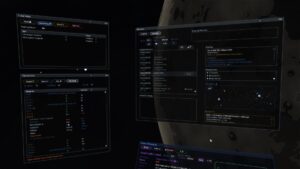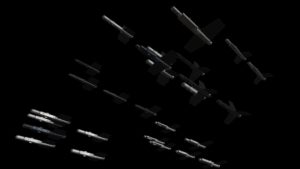
The main development goal for this year (2019) is to have fully operational space stations to dock to. Yet after the work on the collision physics an issue quickly appeared about the docking ports: where should the related information be stored and how to pass it to the ship’s flight controller?
On a monday morning in July I decided not to duplicate the data and have the stations broadcast the necessary information through a radio link: should have been a 3 hour quick-and-dirty hack… But as it turned out it actually became a 3 month implementation of a full new game system! 😀
It’s not actually a delay since I’m planning to spend a lot of time on the ship’s sensors and electronic warfare equipment starting next year. So it’s rather an “unexpected optimization of the project’s work items” 🙂
Like with the other systems the model attempts to be as realistic as possible while hopefully offering interesting gameplay elements:
- allocation and configuration of the radio resources,
- search for contacts (in space and across the different channel sets),
- management of trade-offs between coverage of nearby surroundings and effective range…
Having to use the on-board systems to sense the ship’s environment and actively search for contacts and information is very dear to me. IMHO it’s really a pity when games dumb down this part and directly display some green and red dots on a “radar display”. To me that’s really missing the “hunting” fun.
Typical operations of the ship’s comms units are presented in the following video:
The underlying model is presented here.
Technically the travelling packets are kept alive as long as they may be received. An interesting twist with modelling a proper propagation velocity (speed of light) is that a radio device might be configured for a successful reception long after the message was emitted!
Also since this is not a frame critical system most of the workload is managed in parallel on a worker thread. It’s largely overkill at the moment but a stellar system might contain many communicating devices in the future. Also I’m planning to reuse the infrastructure to model the ship’s radars and jammers.
Thanks for reading!


